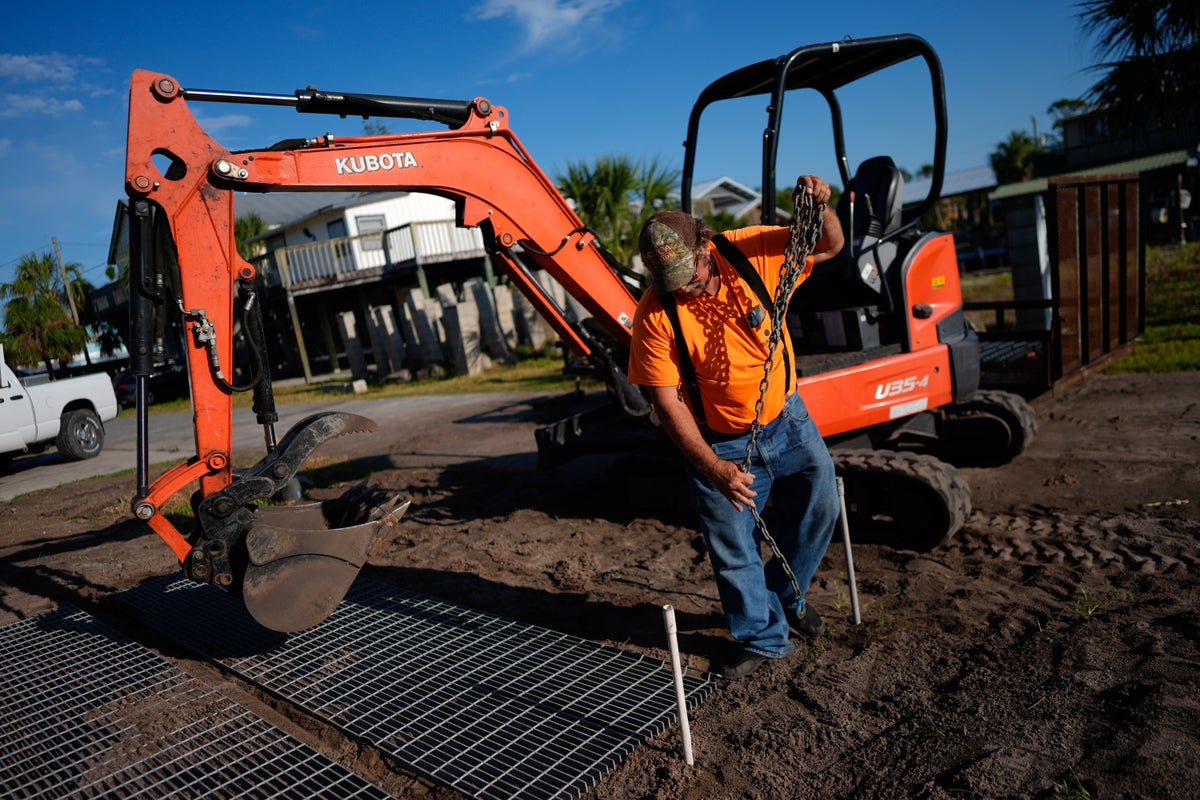
Support truly
independent journalism
Before Hurricane Idalia smashed into a small fishing village in northwestern Florida, Charles Long, 68, was fixing up a two-bedroom house for him and his wife. After the August storm, he found remnants of it in a nearby canal and on a neighbor’s property.
To rebuild a new home elevated on stilts, as code requires, would cost $450,000, according to one estimate he got. He can’t afford that. Instead, he’s building a pole barn in Horseshoe Beach for a recreational vehicle he is saving to buy.
“I’m going to roll everything out of here” if another hurricane comes this year, Long said with a nervous chuckle, his face glistening with sweat.
For people like Long, rebuilding after extreme weather disasters can be a long and expensive process. The U.S. government has poured billions of dollars into projects to help build resiliency. But as the impacts of climate change increasingly threaten coastal communities, experts say protecting them is getting harder and more complex.
The tens of thousands of dollars it can cost to perch a new home on stilts, plus the hundreds of thousands more to build the house, is cost prohibitive for many people. So are the rising rates of insurance. Resiliency plans also must address the compounding impacts of flooding, erosion, intensifying storms and sea level rise.
And there’s no one-size-fits all approach — every community has different priorities and threat exposures. Whether using nature-based solutions or building sea walls to ward off flooding, each will have indirect impacts on ecosystems, shoreline access and community character.
All things considered, designing holistically poses “a wicked problem,” said Paul Gallay, director of the Resilient Coastal Communities Project at Columbia Climate School.
“You want to leave communities well protected, but you also want to preserve what makes them vibrant and worth living in,” he said.
That's not easy. Redevelopment after weather disasters and climate resilient infrastructure can inadvertently trigger, accelerate or contribute to gentrification, much like what happened in Galveston, Texas, after Hurricane Ike in 2008, and New Orleans after Hurricane Katrina in 2005. Property values and the cost of living can rise, displacing residents and change a community's aesthetic.
In Horseshoe, where recovery from Hurricane Idalia is still underway 11 months after the storm hit, some residents worry that developers and wealthier newcomers who can afford to build to code will price them out if people decide to sell.
“Everyone is worried about ... Horseshoe changing,” said resident and councilmember Brooke Hiers. “They don’t want the hurricane to make everybody sell and turn it into a commercialized, busy place.” But she feels that is coming, “I just don’t know when,” she said.
Funds, shelter programs and other state and federal resources can help hurricane survivors rebuild, but they're most often temporary solutions, can take time to access and don't fully address long-term housing challenges like affordability.
John Brogan, coordinating officer for the Federal Emergency Management Agency, said they have provided over $83 million in grants to nearly 36,000 Idalia victims.
He said it’s important for communities that have so far avoided extreme weather events to learn about mitigation projects they can do now to prepare when a major storm hits. “These events are going to keep happening,” Brogan said, “especially for these coastal communities.”
Sea level rise and intensifying storms are eroding coastlines and devastating neighborhoods. Studies show that the water in Mexico’s Gulf is rising and warming faster than the global ocean — with warmer waters supercharging storms. Old and aging infrastructure is struggling to keep up.
Whether sacrificing a beach for a seawall or using nature-based solutions like wetlands that buffer against extreme weather, coastal communities are facing the increasingly difficult choice between staying and going.
They're asking themselves "whether or not we can protect the infrastructure in place, and if we do that — which is also a question, obviously the ocean is very powerful — for how long and at what cost," said Alyssa Mann, climate resilience project director for the California chapter of the Nature Conservancy.
For people who choose to stay along the sea, informing them about the risks their coastal communities will face is critical.
“There’s a cost to living in paradise,” said Horseshoe Mayor Jeff Williams, echoing a popular sentiment. “There’s always downsides to everything good.”







